The colder months of the year mark the season when many of Mother Nature’s creatures go into hibernation, live off their body fat and re emerge in the spring. Insects like German cockroaches, hibernate as well, but they do so inside warm households where they can rapidly reproduce and wreak havoc in the lives of Pittsburgh homeowners and residents.
For Brown Recluse spiders, raccoons, house mice and Norway rats, surviving the cold translates into seeking refuge and food sources as far away from the bone-chilling freeze as possible. This is why at times, winter can sometimes be a bit busy for our pest-control and pest-management specialists.

The following represent the most common pest intruders to Pittsburgh and its environs —
The German Cockroach
The most common roach species found all over the world, the German Cockroach is dependent on water, and seeks refuge in sewers, floor drains, crawl spaces, basements rafters, sheet rock and the interior walls of private residences and apartment buildings.
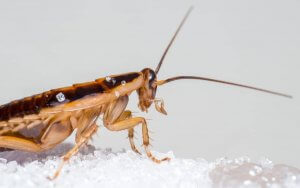
In an urban setting and/or private residence where the temperatures are usually warmer than 50 degrees, they are often found in kitchens and bathrooms, and most often gain ingress via grocery bags and used appliances.
Once they gain a secure a foothold in a home, German cockroaches can remain active all winter long, and they are very difficult to eliminate without the professional guidance of the pest-control and pest-management experts at Pestco.
Tip: To avoid an infestation, homeowners should be mindful of areas under appliances and sinks, keep counters and floors clean and free of crumbs and dispose of garbage regularly.
Recluse Spiders
Brown recluse spiders are solitary, secretive critters, and they seek out quiet, warm, dry and dark locations such as: closets, attics, crawl spaces and basements to spin their webs. Their moniker derives from both their nature and color.
They are known by other names as well which include: fiddleback spider, brown fiddler, or violin spider. Although their habitat is in the south and central United States, they are known hitchhikers and are often transported to other regions via furniture creates.
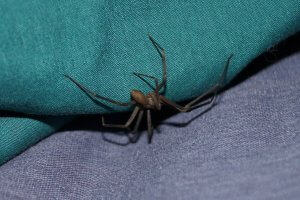
They are known to hide under porches or deep inside closets. They can go for many months without eating, and love the hot and dry climactic conditions found inside many structures. A bite can be serious and often requires medical attention. The Brown Recluse represents one of three North American spider species with venom that is studied medicinally.
Tips: Keep trees and shrubs trimmed away from the home and cut back overhanging limbs. Store clothing and shoes inside plastic containers, especially in seldom-used closets.
Raccoons
Raccoons are usually found in forests, marshes and prairies. They gain ingress to residences in urban areas via attics or chimneys where they seek places to nest.
They are adaptable creatures, and they use their dexterous front paws and long fingers to find and feast on whatever food may be available.
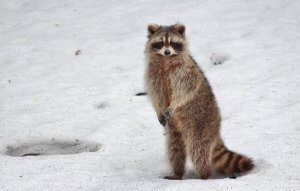
Raccoons are a major host of rabies in the United States, and the Center for Disease Control and Prevention (CDC) reports that raccoons are the most frequently reported rabid wildlife species.
Tips: Due to the fact that raccoons love trash, homeowners should store trash cans and recycling bins in sealed areas whenever possible. If trash cans are kept outdoors, use animal-proof lids. In addition, make sure that chimneys have mesh covers to prevent ingress.
House Mice
Whether the reference is to one mouse or three blind ones, the house mouse is the most common rodent species found in the United States.
They make their nests in dark places, such as attics and basements, and can cause serious damage to homes and surrounding property by chewing through drywall and wires, often triggering electrical fires.
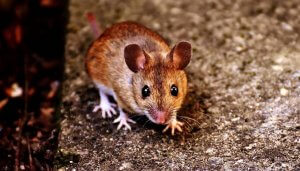
They also contaminate food and spread diseases, including Salmonella and tapeworms.
Tips: Since these critters can easily fit though an opening the size of a dime, cracks and small holes outside a residence should be sealed with caulk and steel wool. Also store boxes off the floor because mice love to hide in clutter.
Norway Rats
Also known as the common rat, brown, street, sewer, and wharf rat, these rodents can fit through an opening the size of a quarter, and like mice, seek out food and water in basements and other dark places.
They are brown or grey in color and one of the larger rodent species.
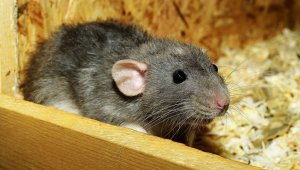
They are known to eat anything they come across, which includes plastic or lead pipes. Norway rats carry a number of diseases, which include but are not limited to: jaundice, rat-bite fever and cowpox virus.
Tip: To prevent Norway rats from entering a home, eliminate sources of moisture in crawl spaces and basements and inspect the residence regularly for traces of an infestation, such as grease marks left behind by the rat’s oily fur .
Some Little Known Facts About Winter Pests
The following represent some facts about these unwanted critters that may not be common knowledge to the average home owner. They offer no solace or peace of mind, albeit they do render another perspective about these unwanted critters.
The German Cockroach Is Associated With Asthmatic Symptoms
Studies have made a direct connection between asthma symptoms and the presence of all types of cockroaches, but German cockroaches particularly stand out from all other species. They are the leading cause of asthma among inner-city children in our country.
German Cockroaches Clump Together
Known as aggregation, this factor can be both a boon and a problem for our trained Pestco technicians when they are called to the scene. The fact that they clump together can make them easier to detect, but if their source is not found, the infestation will continue with a vengeance.
Rodents Can Survive A Long Time Without Water
Rats and mice get most of their needed moisture from the food they ingest. Even though they are dependent upon water for survival, the ways they can go about taking water in can be either direct; namely, from natural sources like lakes, puddles and streams, or indirectly via ingested foods.
Rats Can Tread Water For As Long As Three Days
Rats can hold their breath underwater for up to three minutes and tread water for three days straight. Flushing a rat down the toilet is a useless endeavor and should be avoided because there is always the chance that he, she or a vengeful cousin may return and find a way to even the score.
Mice Have Enormous Appetites
For tiny creatures with even smaller stomachs, mice can certainly pack it away. They eat between 15 and 20 times a day. This is why they seek winter shelter near available food sources.
Brown Recluse Spiders Do Not Catch Prey With Webs
These spiders are nocturnal hunters. Although they do spin webs, they do not use them to ensnare their prey. Instead, they chase down their victims and with their fangs inject their venom to subdue them.
Raccoons Get Their Name From Their Paws
Raccoons have some of the most dexterous paws found anywhere in nature. The English word ,raccoon, derives from the Powhatan (Algonquin) Indian word, aroughcun, which translates into “animal that scratches with its hands.”
Raccoon Mask Markings Aid Vision
The black fur around the eyes of a raccoon does much more than resemble a mask. The color absorbs incoming light and serves to improve their night vision, which is when they are most active. It allows them to perceive contrast.
The Very Best In Pittsburgh Winter Pest Control
We are a family-owned and operated, five-star organization and have been in continuous operation since 1948, providing the best pro-active strategies of pest exclusion for homes throughout the Pittsburgh area and western Pennsylvania.
We have an impeccable reputation for qualified customer service, and we are Google Guaranteed, Quality Pro and Sentricon Certified. We are also proud members of the National Pest Management Society, and 2 of the 7 Ace-certified technicians throughout all of Western Pennsylvania environs are a part of our close-nit family!

Every infestation has its own uniquely distinctive character, and our team’s game plan always entails an extensive and thorough examination of the affected residence. This includes the sealing up of any cracks and crevices that might permit insect or rodent ingress when necessary.
Our staff of entomologists, researchers and technicians are backed with both hands-on experience and the most sophisticated arsenal of tools available.
Our technicians are licensed by the Pennsylvania Department of Agriculture and they are required to attend monthly workshops to keep them in the know about the latest innovations in both products and methods to combat pest infestations of all kinds.
Our main selling point is the fact that it’s much easier and safer for the environment to keep pests from entering a home in the first place than it is to eradicate an infestation once it takes hold.
Give our team a call today and find out how we can help in maintaining a pest-free residence tomorrow! (412) 252-5200
Final thought about pest infestations: I am a non-violent person until I see a spider. Then I become Al Capone and want him dead! I want his family dead and I want his house burned to the ground!.~Some E-cards
Here are 12 additional tips for a happy, pest-free home this winter!
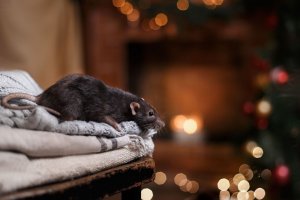
Photo Credits: Pixabay
 Over 300 Reviews
Over 300 Reviews 